|
SS Division Wiking On December 1st 1940,
a new SS Division was formed. It was the first SS Division that had non-German volunteers
of Scandinavian descent. Although, the SS Division had a considerable number of foreign
troops in its ranks, the senior NCO's and Officers were predominantly German. This SS
Division was comprised of three Infantry Regiments and a Flak Battalion: 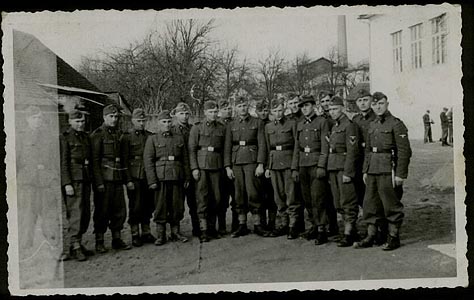
| |
|
Wiking Cuff Title In August 1942, members of the Wiking Division were presented with the unit's cuff title, while Grenadier regiments wore their own respective sleevebands bearing the name of their particular regiment. 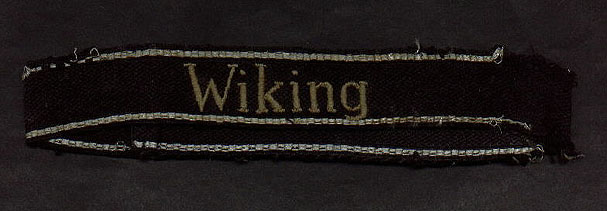
All members of the division were issued cuff bands bearing the unit title "Wiking." Enlisted men and NCOs wore the RZM pattern machine woven black rayon cufftitle. Above shows an early enlisted sleeveband, introduce in 1942. This style sleeveband is commonly referred as RZM pattern. The cuff band has machine embroidered latin script "Wiking" in silver/gray cotton thread on black rayon. It shows seven aluminum threads bordered on both ends. This cuff band has been removed from uniform and has been stiched together. | |
|
SS-Infanterie Regiment "Germania"
In August 1934, the SS-Standarte 2 of the SS-Verfügungstruppe
was formed. At the 1936 Nürenberg Rally, the SS-Standarte 2 was
officialy granted the honor title "Germania" where it received
the unit colors and authority to wear the cuffband bearing the
unit title. Germania Cuff Title 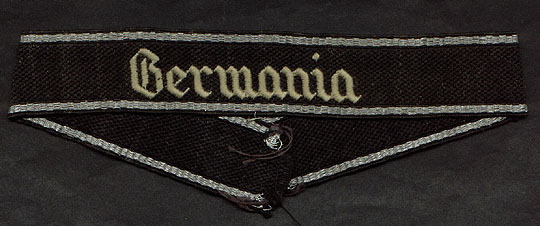
Above is an enlisted early
RZM pattern "Germania" cuffband. The "Germania" title is machine embroidered in Gothic script. | |
|
SS-Infanterie Regiment "Westland" Westland
Regiment joined the Wiking Division upon its formation. Originally
it was designated
SS-Infanterie-Regiment "Westland" being renamed
in November 1942 as SS-Panzer-Grenadier Regiment "Westland." Westland Cuff Title 
The Latin script was machine embroidered in silver/grey cotton
thread with bordered top and bottom edges in seven strand horizontal
silver/aluminum threads. | |
|
SS-Division Wiking
After training at the SS Training Camp in Heuberg, Germany, the SS Division Wiking
(Motorized) was ready for combat by 1 April 1941. 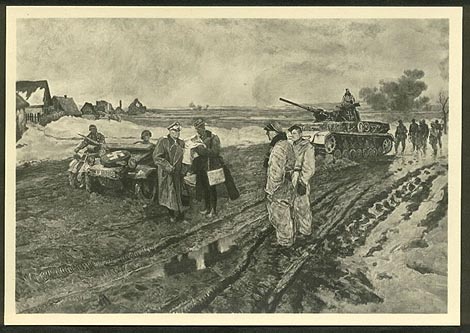
"Commander Brigf. Steiner of the SS-Division Wiking gives orders for the next action." | |
|
Panzer-Grenadier Division der SS Wiking On 9 May 1943, the
command of the division was placed under SS-Obergruppenführer Herbert O. Gille. By 9
November 1942, the SS Division Wiking was renamed as
"Panzer-Grenadier Division der SS Wiking," even though it was not fully organized as one. | |
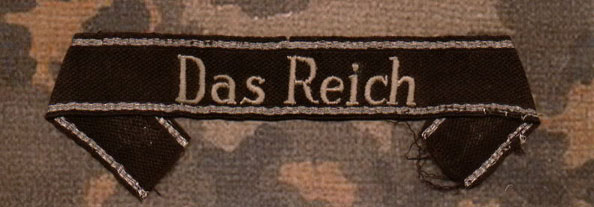
Das Reich Cuff Title On top you'll see a real nice very rare RZM pattern Das Reich cuff title. This German elite Waffen-SS unit did have for a time Flemish volunteers in the Division. |